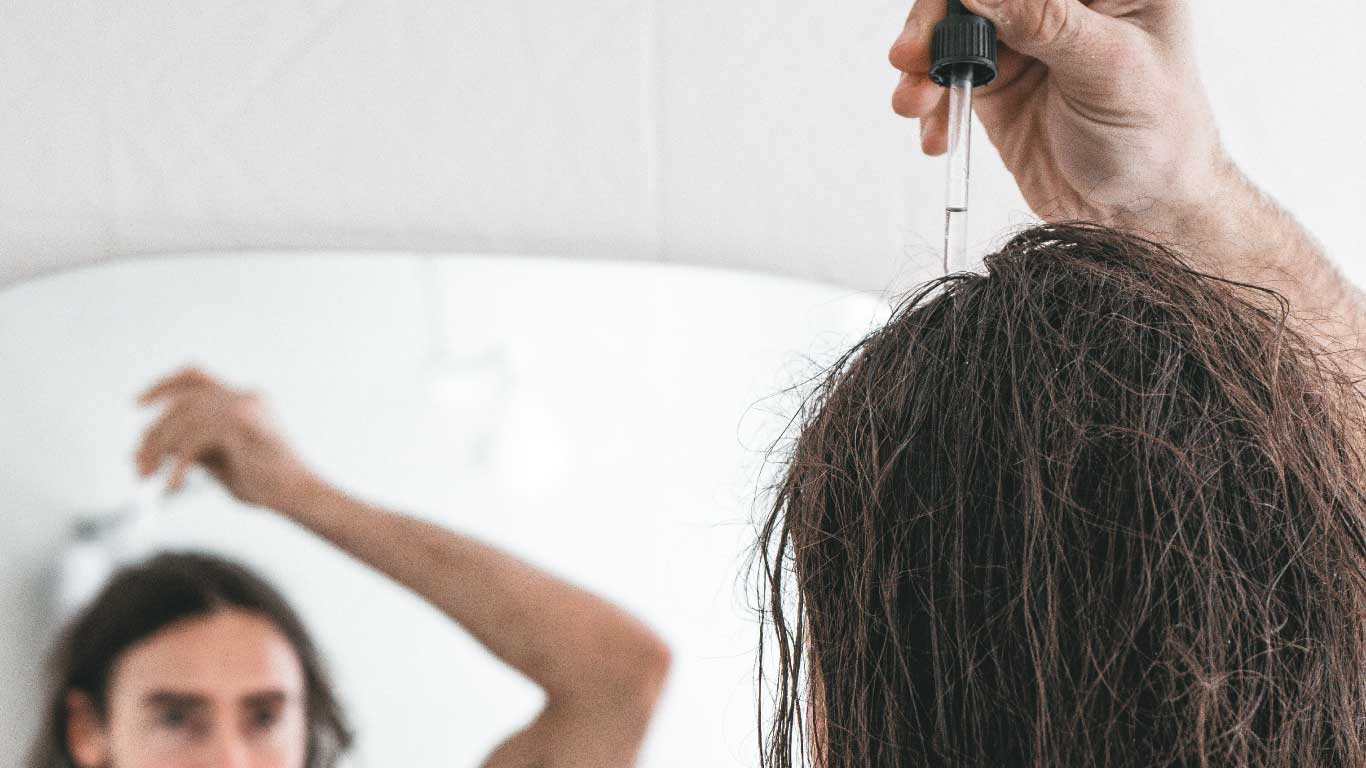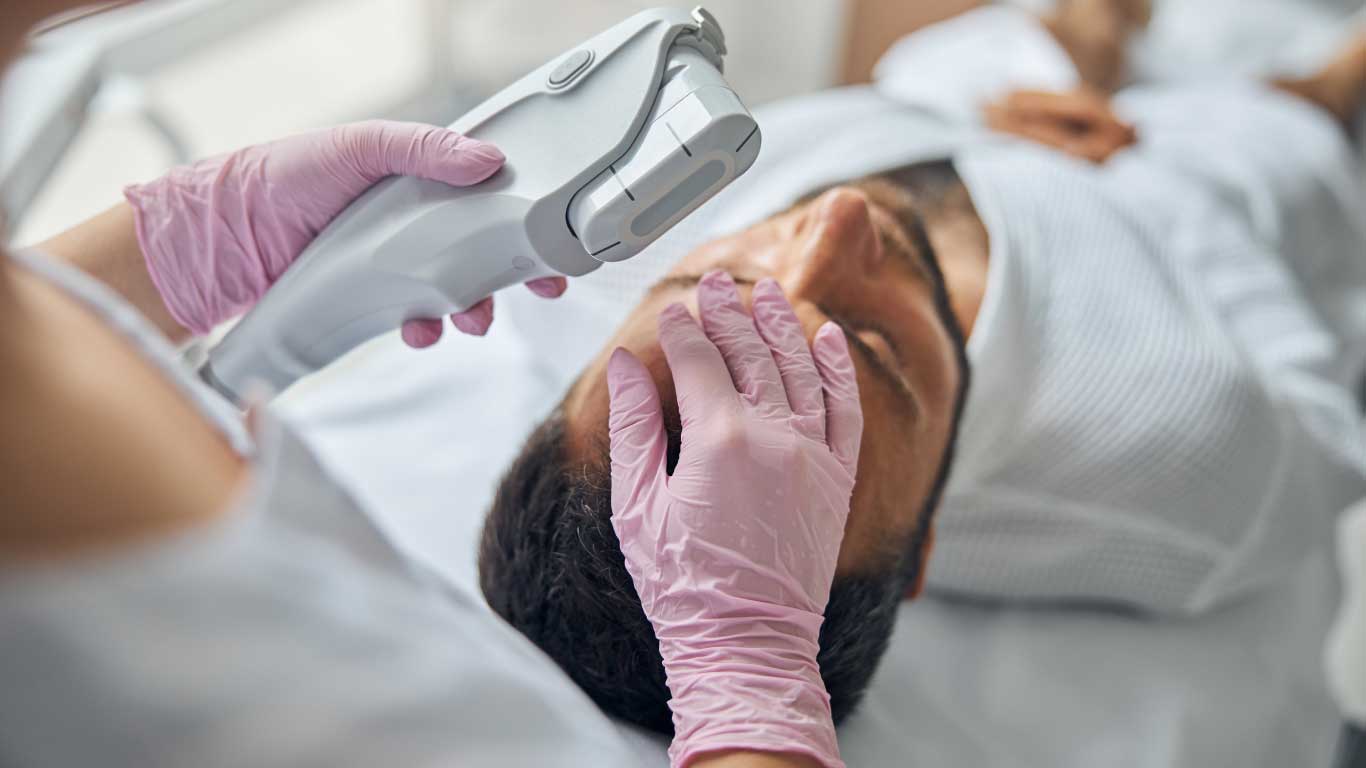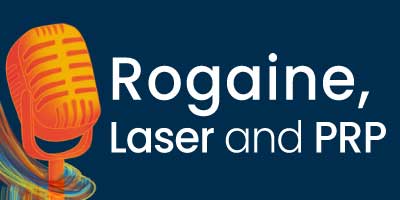Hairs To You Podcast: Rogaine, laser light therapy and PRP for hair loss
Posted by Superhairpieces on Aug 12, 2022
Continuing on from our last post, we have Hairs To You podcast guest Nicole Budani discussing all things hair loss.
READ: Part 1 - Hairs To You Podcast: Alopecia, misconceptions and how to combat it
In this blog post, we will be recapping her comments on rogaine, otherwise known as minoxidil, along with what its benefits are and whether women can use it along with men. She also talks about laser light therapy and PRP (platelet rich plasma) as potential solutions to deal with hair loss.
If you prefer, you can also listen to the full episode below:What exactly is Rogaine and what are its benefits?
Nicole Budani: Rogaine is a medication, it's actually a heart medication. It started off as a heart medication. What it does is it increases blood flow to an area. And for some reason, we don't actually know why though it's been around for like 30 years. It actually can grow new follicles from nothing. You could rub it on your palm and hair follicles could grow there. The key, though, is you have to keep rubbing it on your palm. It has to be left on that. You would have to not wash your hands for example.

But what it essentially does is it grows little new little hairs, so it actually grows villous hairs. Those are the kind of hairs that you kind of see at the front hairline peach fuzz. Baby hairs. So it's really good with filling in areas. But it won't grow in evenly. So if you're trying to create a hairline with rogaine, it's not necessarily going to work. But it does help with areas that have existing hair and it does kind of fill in areas, but you have to keep using it over the long term. It's really unfortunate because a lot of the time, you know, you see it at Costco, you see it everywhere. It's over the counter -- anybody can pick it up. But if you don't know what it's doing, like constantly, I see people who start using rogaine and think and thinking, ‘oh, I'm gonna prevent hair loss in the long term.’ They just keep losing their hair, really. They get a boost at the beginning, but after a period of a year or more, depending on how fast the person's hair loss is, they're going to start to see a decline.
So is Rogaine not ideal for women given that it grows baby hairs?
Nicole Budani: Definitely. It won't change your ponytail by any means. It might, if you're worried about seeing your scalp, it might actually help a little bit with covering some of that, but it's limited. It's not going to totally cover an area.
Can you explain laser light therapy and how it relates to hair loss?
Nicole Budani: So laser light therapy has been around for a long, long time, and this is actually one of the weird ones that kind of corresponds with my background with athletic therapy. It's the same kind of laser that's used for musculoskeletal injury. So these are cold therapeutic lasers and what you do is you put it on your head. Usually depending on the machine, because there's so many different types of machines on the market. Most of the studies originally were done with laser combs and they were like little comb looking things with multiple diodes on them, anywhere between like I think it was like six to 12. And they basically hold it in place for about 30 seconds to a minute and then move it along the area of hair loss. And what this would do is it would stimulate the existing follicles. So if we were to look at your hair under a microscope, we usually have anywhere between one to four hairs growing from each place. On average, probably about two. As you miniaturize, as the hair gets weaker, a few things happen, the cycle changes. So a lot of the time women, for example, will notice that they can't grow their hair very long. And that's because their cycle is much shortened. Usually, a cycle takes around seven years. Our hair, we can lose anywhere like around a hundred hairs a day, which is totally natural. But if we start losing more than that, it's because usually the cycle is shortening and the hairs are weakening and they fall out, and the way they fall out is they actually get thinner and thinner and thinner. So like where you might have two hairs starting from one follicle, one of those hairs starts to get really, really thin and then eventually falls out and then you're left with one hair in that follicle. And if you can imagine that's like 50% of your density, what laser does is it takes those weakened hairs and starts to strengthen the follicle again. So you can have for example, a single hair and it can grow a partner or you can have like a single thin hair and it starts to grow thicker. And what laser does is it uses light energy and the energy gets absorbed by that follicle and it uses it for healing.

It increases blood flow and it also has some hormone interaction that increases as well for healing. And that's very similar to what happens if you hurt your knee, for example, and you wanted to reduce swelling. And over a long period of time, what you'll find is that the hair actually starts to grow in a little bit thicker, which is great because you get more than you had previously, but it doesn't bring it all back. These are great, especially at the beginning. So if a person has quite a lot of hair loss and they use laser, they're only going to get a minimal kind of change. It is very subtle and it takes a while for hair to grow in.
So there are no instant results with laser light therapy?
Nicole Budani: Heck no. And you have to do it frequently if you're not doing it frequently, like once a month is not enough. Like once a week sometimes is not enough. You have to do it quite frequently to see change.
What happens once you do see results? Can you just stop or is this something you’re doing forever?
Nicole Budani: It's something you're doing forever. I always kind of compare it to people, okay, imagine you're going to the gym. You're trying to work out and you're trying to get big muscles and you get big muscles. But then you have to keep it, so you have to keep going to the gym. If you stop going to the gym, your muscles are going to deplete. And the same thing goes for hair. It's a lifelong journey and because it's genetic, you have to keep fighting for it. It's kind of like a war you're going to lose, but you can extend that battle for as long as you want.
Can you explain PRP?
Nicole Budani: PRP is actually quite similar to laser light therapy. But it uses a totally different method to actually regrow [hair]. So what they do with PRP or platelet rich plasma is they take blood, they center fuse it or sometimes they put them in gels to separate the blood. And then what they'll do is they take the plasma portion of it and they go in and inject it into the area of hair loss. So yes, there are needles involved. It's not fun. It's not a fun experience but it does work faster than a laser. And I find compliance is much better because you're going to a facility to get this done. You're paying money to do it. You're not just buying a laser machine to just use it whenever you feel.
You're probably more terrified going to your procedure but it does really help over the long term, but again, there's limits to these kinds of treatments as well. Again, it's better for people at the beginning of hair loss, not end stage. And as soon as you start to see a lot of shiny bald area, you're not really looking into PRP.
-----Stick around as the next blog recap will see Budani explain reasons for hair loss such as genetics, telogen effluvium and what role COVID-19 played in people losing their hair these last few years!
-------------------------------------------
Interested in learning more about getting started with hair systems? Browse through our website at www.superhairpieces.com (US & International) or superhairpieces.ca (CAN)
Don’t forget to tag us at @Superhairpieces and #Superhairpieces on your social media channels to get a shoutout! And make sure to like us on Facebook, follow on Instagram and subscribe to our YouTube channel!
 Likes
Likes



 USD
USD







